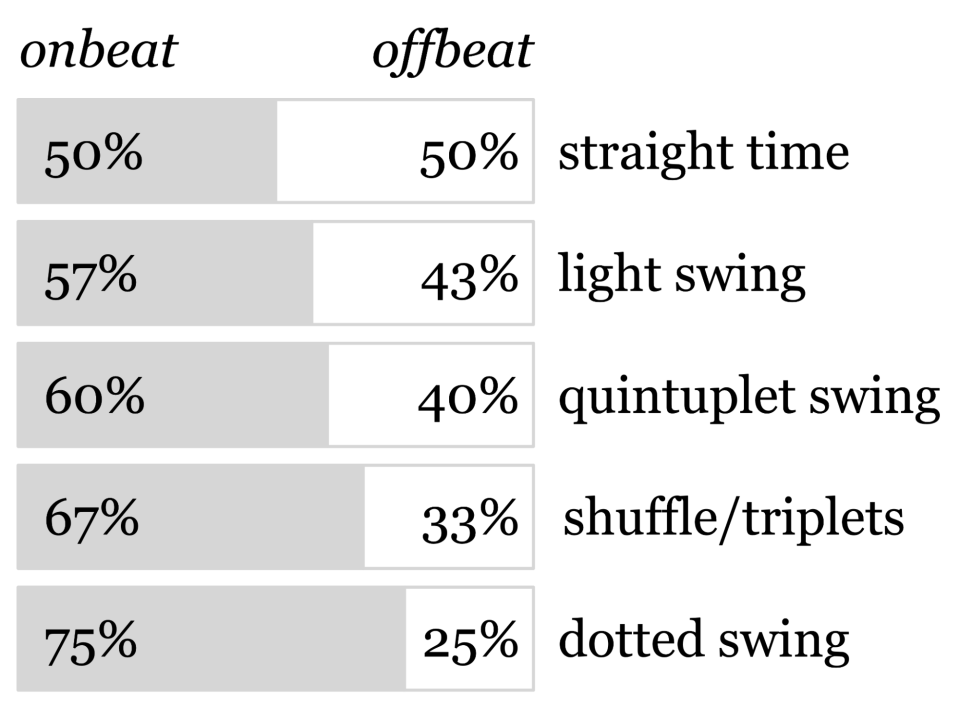"An effortless command of musical time”: A music professor breaks down Amy Winehouse's Back to Black

Amy Winehouse’s short and tragic life story has overshadowed her actual music in public consciousness. With her biopic coming out, though, it’s worth listening to that music with fresh ears. Today, we're looking at what is perhaps her best-known song: the third single and title track from her second and final studio album, Back to Black.
Winehouse wrote the song in a single night. The retro-minded DJ and producer Mark Ronson came up with the chords and drum part. Ronson says that all of his songs with Winehouse came together quickly; so quickly, in fact, that he wishes they had taken longer so he could “have more memories.” The song tells the story of Winehouse’s breakup with her then-boyfriend and future husband, Blake Fielder-Civil. The chorus doesn’t rhyme, which is a highly unconventional choice for a pop song.
You can see Winehouse cutting the lead vocal in the studio with Ronson in this clip from the 2015 documentary Amy:
Even if you are at the highest levels of pop stardom, recording studios tend to be unglamorous places. The moving blankets are draped around the mic to deaden the natural reverb of the room.
The instrumental parts are performed by The Dap-Kings, who were assembled as a backing band by the great and underappreciated soul singer Sharon Jones. (I adore her minor-key version of This Land Is Your Land by Woody Guthrie.)
Jones had some feelings about being left out of the Amy Winehouse phenomenon, and rightly so. When I told the undergrads in my songwriting class that I was writing this article, all of them knew Back to Black. Two of them have performed covers of it. Meanwhile, none of them had so much as heard of Jones.
All of Amy Winehouse’s music evokes the R&B and girl groups of the 1950s and 60s, but the production and arrangement of Back to Black have a specific reference point: Phil Spector’s Wall of Sound technique. You can hear Spector’s sound in Be My Baby by The Ronettes.
Winehouse loved the Ronettes. She modeled her beehive hairdo and Cleopatra makeup on them. The drum break at 1:33 in Back to Black is a clear homage to Hal Blaine’s iconic drum intro in Be My Baby. For an even more epic Spector Wall of Sound production, check out Isn’t It A Pity by George Harrison.
There are two components to the Wall of Sound. The obvious one is reverb and lots of it. The other is dense layering. Isn’t A Pity has five guitars, three pianos, a drummer and at least three percussionists, an orchestra, and a choir.
All these layers blend together in the sea of reverb. Spector’s techniques were massively influential on other pop producers. Every song you hear on the radio has stacks of layered instruments and vocals, though producers tend to use a lighter touch with the reverb than Spector did.
Back To Black isn’t quite as dense as Isn’t It a Pity, but it is still very much in the Wall of Sound tradition. In addition to the Dap-Kings’ bass, drums, two guitars, piano, percussion, and four-piece horn section, there’s also sixteen-piece string section, all drenched in reverb. The only conspicuously “technological”-sounding aspect of the track is the trilling effect on the lead guitar part, produced by a Leslie speaker. And even the Leslie effect is retro; it dates back to 1941.
The song’s harmony is straightforward. It’s a simple four chord loop for most of its duration
The song’s harmony is straightforward. It’s a simple four chord loop for most of its duration: Dm, Gm, Bb, A7. In the bridge, the loop is slightly different: Dm, Bb, F, A7. All of these chords but one are built from the notes in the D natural minor scale: D, E, F, G, A, B-flat, C. To build A7, you need to raise that C to C-sharp to make the chord’s major third. This creates the D harmonic minor scale, which has a “classical music” sound to it, an old-world spookiness.
Harmonic minor doesn’t just evoke Western European history. The top half of the scale (A, B-flat, C-sharp, D) resembles a pitch collection that is widely used in the Middle East and North Africa called the maqam Hijaz. If some of Amy Winehouse’s melodic phrasing on the A7 chords sounds Middle Eastern, that is why.
The main rhythmic idea in Back to Black is an accent on the offbeat subdivision between the second and third beats in each bar. This pattern has many names. In the early part of the 20th century, it was called the Charleston rhythm or the “Spanish tinge”. It’s more accurately known as tresillo, the first half of son clave. Whatever you want to call it, the rhythm usually denotes cheerfulness in Anglo-American pop. Build Me Up Buttercup by The Foundations is a typical usage.
Back to Black takes this cheerful groove in a very different emotional direction. Amy Winehouse also defies its upbeat vibe by singing with a half-time feel, implying a ballad-like 60 beats per minute over the medium-up 120 beat per minute instrumental.
Aside from tresillo, the other important component of the Back to Black groove is its wide swing. You create swing by alternately stretching and squeezing the two halves of each beat. The more you stretch the front half of the beat and squeeze the back half, the more widely you swing.
Before we get into any math, it’s helpful to have some bodily imagery for swing. Get up and walk around (or watch someone else walking.) Focus on your hips. Is your pelvis moving along in a straight line, or is it swinging left and right with each step? If you are marching, or otherwise holding yourself rigidly upright, your pelvis won’t swing very much.
TUTORIAL

How to add swing to your beats in Logic Pro and Ableton Live
However, if you saunter, sashay, strut, or swagger, your pelvis will swing from side to side like a pendulum. The wider your hips are swinging, the sexier your walk is. (Fun fact: in gait kinematics, the side of your pelvis doing the movement during a given step is called the swing side.) The analogy to music could not be more perfect: straight rhythm feels like marching, while swung rhythm feels like sauntering, sashaying, strutting, or swaggering.
Roger Linn developed the first drum machine that could swing, the Linn LM-1. He also devised a system for quantifying swing that is still widely used in drum machines and DAWs.
To understand his system, you need to know some terminology. A measure of 4/4 time is divided into four beats, each of which is a quarter note long. Each quarter note is divided into two eighth note subdivisions. The first eighth note in each pair is called the onbeat subdivision, and the second one in the pair is called the offbeat subdivision.
To create swing, you make the onbeat subdivisions longer, and make the offbeat subdivisions correspondingly shorter. There is a lot more to swing than just stretching and shrinking your subdivisions uniformly, but it’s a good pedagogical starting point. (Roger Linn’s drum machines apply swing at the sixteenth note level, not the eighth note level, but that doesn’t matter for this discussion.)
In straight time, the onbeat and offbeat subdivisions are the same length, 50% of a beat each, so Roger Linn calls that “50% swing.”
At 57% swing, the onbeat subdivision is four sevenths of a beat long, and the offbeat subdivision is three sevenths of a beat long. That is close to even, so this is a light and subtle swing feel.
At 60% swing, the onbeat subdivision is three fifths of a beat long, and the onbeat subdivision is two fifths of a beat long. Now the swing feel is more pronounced and obvious. This is sometimes called quintuplet swing.
At 67% swing, the onbeat subdivision is two thirds of a beat long, and the offbeat subdivision is one third of a beat long. This two-to-one ratio is also known as triplet swing or 12/8 shuffle, and it sounds more like blues or country than like funk or hip-hop.
At 75% swing, the onbeat subdivision is three quarters of a beat long, and the offbeat subdivision is one quarter of a beat long. This is called dotted swing. You most often to hear it in very slow jazz ballads, like “Lil’ Darlin’” by Count Basie.

The swing in Back to Black is heavy, a bit wider than triplet feel. That is closer to a jazz ballad than anything you’re likely to hear in contemporary music.
When people speak casually about jazz, R&B and other Black American styles, they sometimes use the words swing, groove, and syncopation interchangeably. Back to Black uses all three of these things, but they are separate rhythmic concepts.
Syncopation is the effect of accenting unexpected beats. Swing, on the other hand, is the continual stretching of the underlying metrical grid. You can understand the difference by comparing the rhythms of country music and Latin music. Country often swings, but it doesn’t use much syncopation. Latin music is always heavily syncopated, but it rarely swings.
Groove is harder to define than swing or syncopation. I think of it as the sum total of all the rhythmic nuances. It’s possible for a groove to be straight or swung, syncopated or simple. The groove in Back to Black is a combination of the syncopated tresillo and the wide swing. That accented offbeat is very late, so close to beat three yet not quite on it. It’s pleasurably tense.
Amy Winehouse rides the groove with nice relaxed phrasing, dropping her phrases half a beat later than you’re expecting, or an entire beat later
Amy Winehouse rides the groove with nice relaxed phrasing, dropping her phrases half a beat later than you’re expecting, or an entire beat later. Beyond these larger-scale delays, she’s slightly behind whatever beat she’s landing on. This doesn’t make her sound sloppy; to the contrary, it shows an effortless command of musical time. The band is similarly laid back and restrained. The drummer doesn’t start hitting the snare until after the absurdly long first verse ends, more than a minute into the song.
At the end of the second chorus, the tempo drops from 124 beats per minute to 107, and the groove shifts from swing to straight. This is very unusual! Nearly every pop song of my lifetime has had a metronomically steady groove or close to it.
Back to Black has had a long cultural afterlife. Secondhand Songs lists dozens of cover versions. The best one by far is by Andre 3000 and Beyoncé from the Gatsby soundtrack. I love how far out of key those 808 cowbells are.
There are a lot of Back to Black remixes out there too. I like SEV’s pitched-down version.
Mushtaq takes advantage of the song’s harmonic similarity to Crazy by Gnarls Barkley to create a kind of mashup.
Speaking of mashups, I wondered if anyone had tried to combine Back to Black and Back in Black by AC/DC. There are a couple of attempts out there, but nothing you would want to hear twice.
Some rap producers have sampled Back to Black, mostly the piano chords at the beginning. For some reason, most of these songs are in languages other than English. Here’s Pasa El Borreador by Los Aldeanos.
Given the reach and impact of the music she made in her short life, I wonder what Amy Winehouse would have done if she had lived longer. Questlove said in the 2015 documentary that she was hoping to form a jazz-fusion group with him, Raphael Saadiq and Yasiin Bey. Can you imagine? Unfortunately, that’s all we can do.

 Yahoo News
Yahoo News 
